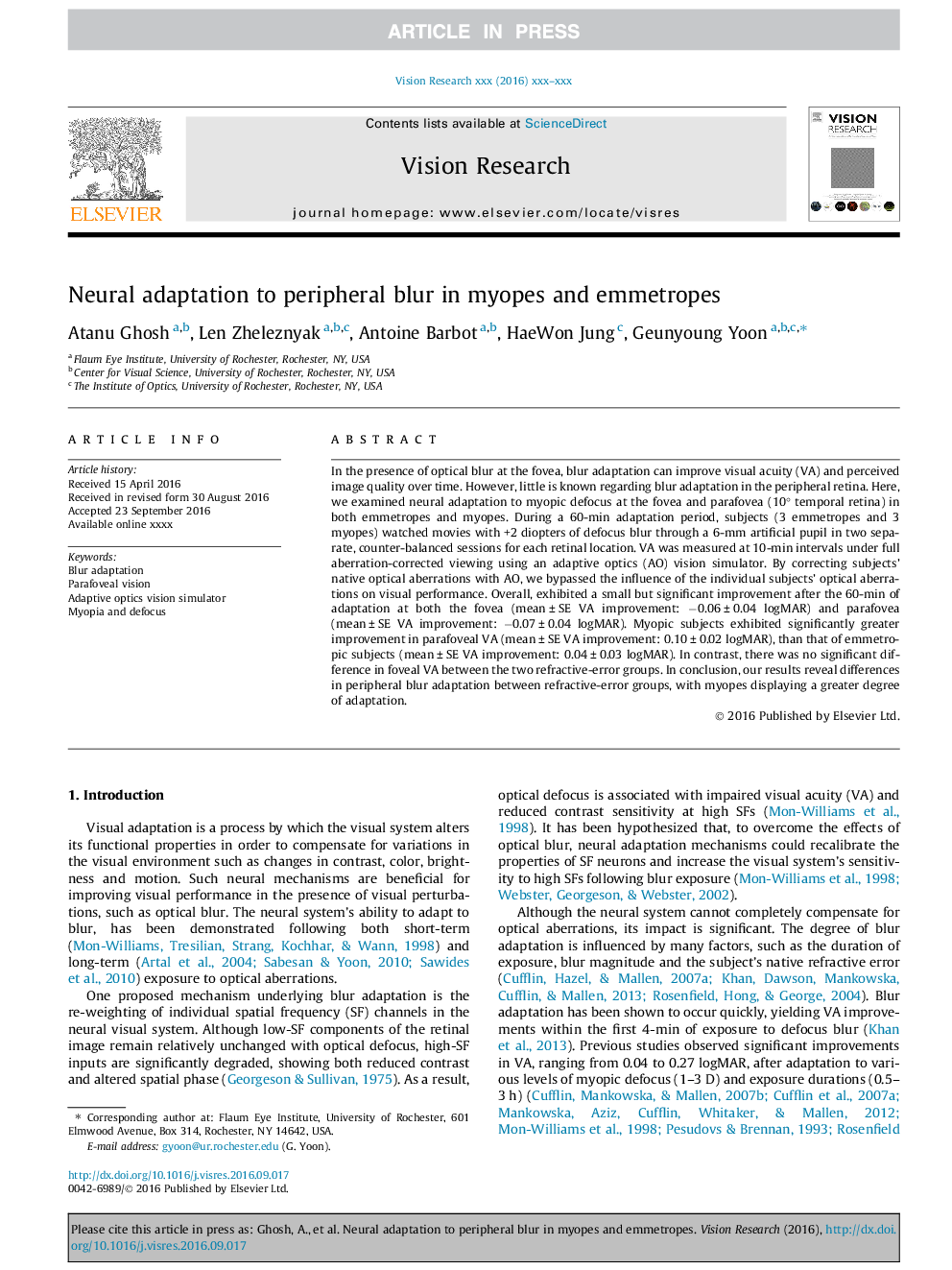| کد مقاله | کد نشریه | سال انتشار | مقاله انگلیسی | نسخه تمام متن |
|---|---|---|---|---|
| 5705920 | 1603167 | 2017 | 9 صفحه PDF | دانلود رایگان |
عنوان انگلیسی مقاله ISI
Neural adaptation to peripheral blur in myopes and emmetropes
ترجمه فارسی عنوان
انطباق عصبی با اختلالات محیطی در میوپ ها و مونتروپ ها
دانلود مقاله + سفارش ترجمه
دانلود مقاله ISI انگلیسی
رایگان برای ایرانیان
کلمات کلیدی
موضوعات مرتبط
علوم زیستی و بیوفناوری
علم عصب شناسی
سیستم های حسی
چکیده انگلیسی
In the presence of optical blur at the fovea, blur adaptation can improve visual acuity (VA) and perceived image quality over time. However, little is known regarding blur adaptation in the peripheral retina. Here, we examined neural adaptation to myopic defocus at the fovea and parafovea (10° temporal retina) in both emmetropes and myopes. During a 60-min adaptation period, subjects (3 emmetropes and 3 myopes) watched movies with +2 diopters of defocus blur through a 6-mm artificial pupil in two separate, counter-balanced sessions for each retinal location. VA was measured at 10-min intervals under full aberration-corrected viewing using an adaptive optics (AO) vision simulator. By correcting subjects' native optical aberrations with AO, we bypassed the influence of the individual subjects' optical aberrations on visual performance. Overall, exhibited a small but significant improvement after the 60-min of adaptation at both the fovea (mean ± SE VA improvement: â0.06 ± 0.04 logMAR) and parafovea (mean ± SE VA improvement: â0.07 ± 0.04 logMAR). Myopic subjects exhibited significantly greater improvement in parafoveal VA (mean ± SE VA improvement: 0.10 ± 0.02 logMAR), than that of emmetropic subjects (mean ± SE VA improvement: 0.04 ± 0.03 logMAR). In contrast, there was no significant difference in foveal VA between the two refractive-error groups. In conclusion, our results reveal differences in peripheral blur adaptation between refractive-error groups, with myopes displaying a greater degree of adaptation.
ناشر
Database: Elsevier - ScienceDirect (ساینس دایرکت)
Journal: Vision Research - Volume 132, March 2017, Pages 69-77
Journal: Vision Research - Volume 132, March 2017, Pages 69-77
نویسندگان
Atanu Ghosh, Len Zheleznyak, Antoine Barbot, HaeWon Jung, Geunyoung Yoon,
